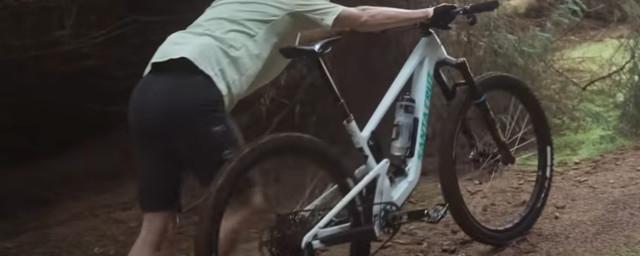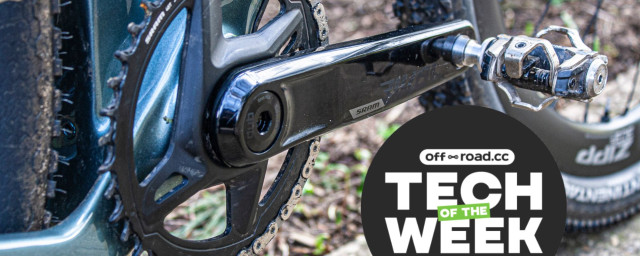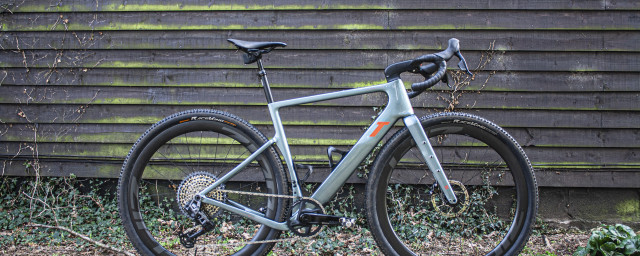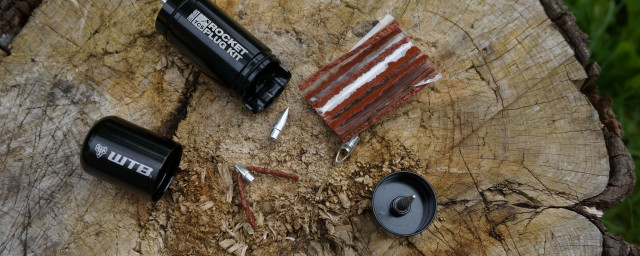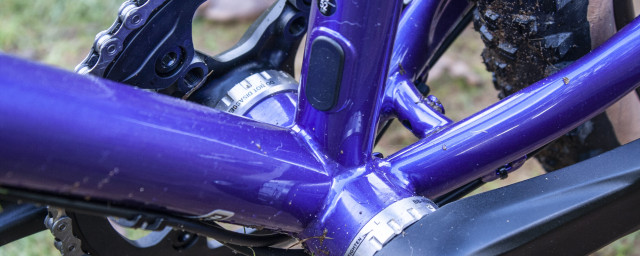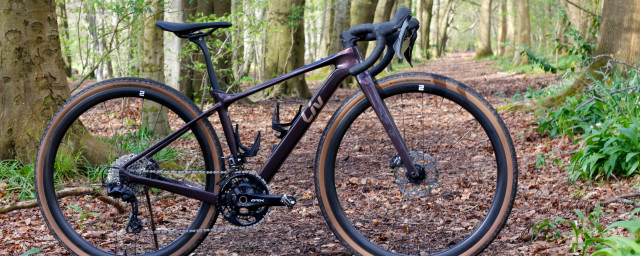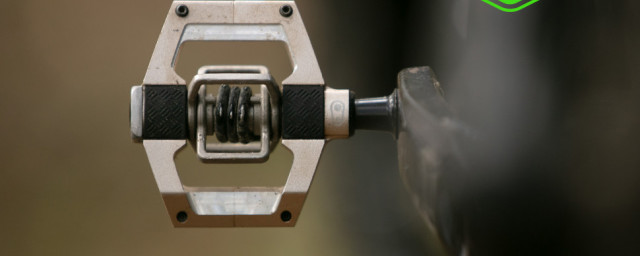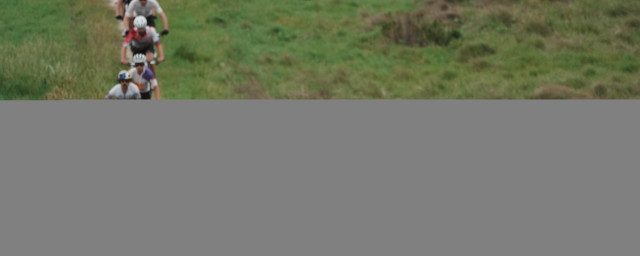The best cycling computers offer comprehensive features that can greatly enhance the riding experience. With modern GPS technology, riders can easily discover new trails and navigate routes with turn-by-turn directions similar to that of vehicle satnav. Modern advanced tracking metrics such as elevation gain, gradient, and surface analysis help riders assess their performance, set goals and track their progress. The latest models allow riders to upload and share their ride in every detail over the best cycling apps and devices using connectivity features like Bluetooth and Wi-fi.
Compared to cycling computers of old, the current crop are worlds apart in terms of accuracy. The old basic cycling computer variants relied upon a wheel sensor to calculate both speed and distance, neither done in the most accurate way with wheel size needing to be manually entered. Let's not get started on the rudimentary wireless technology, that could, and often did, lose the connection between the head unit and the wheel sensor at any given moment.
Contemporary cycling computers with their full-colour screens similar to that of a smartphone, clearly depict all the metrics you need to track in vivid detail. The screens are larger than they once were - which provides real estate for more critical data fields. It also allows for a bigger, easier-to-read fonting and a more detailed map for exploring and navigation.
The touchscreen is the other smartphone tech that has transitioned to the cycling computer. This makes for a better weather-sealed unit without buttons and allows better access and operation jostling between pages and screens. The best cycling computers harness the advances and availability of global positioning systems or GPS satellite technology to accurately track your location, the speed across the ground and the elevation gained and lost during your ride.
While synonymous with road cycling, the best cycling computers are also designed to be durable and rugged, comfortably able to withstand the harsh conditions of gravel and mountain biking. Units now come loaded with a long-lasting rechargeable internal battery and some of the latest Garmin computers even utilise solar technology, soaking up the rays to keep your device topped up.
Smartwatches are becoming a popular alternative to the cycle computer. If you are not reliant on navigation and on-the-fly data like your speed. Having a watch tucked well away could be a good option for those prone to distraction or the odd tumble. They often pack the same capabilities as a cycle computer but are better suited to cover multiple sports.
This guide contains the best cycling computers currently available. We have tested them all for off-road use covering both gravel and mountain biking. They have all been reviewed by us and have scored highly during our testing protocols. The top performers in our tests are listed below with a clickable link which will jump straight to the product introduction. Under each product, you'll find a handy link to our full in-depth review.
Further down, we also answer some of the most frequently asked questions about the best cycling computers for mountain biking and gravel.
- Garmin Edge 1040 Solar
- Wahoo Elemnt Roam v2
- Hammerhead Karoo 2
- Stages Dash M200
- Garmin Edge 530
- Garmin Edge 130 Plus
Garmin Edge 1040 Solar
£630
Screen size: 3.5in / 89mm
Connectivity: ANT+, Bluetooth, Wi-fi
Companion App: Yes
Navigation: Garmin Cycle Maps
Claimed battery life: Up to 45-hours
Colour screen: Yes
Touchscreen: Yes
This is the Garmin Edge 1040 Solar. The brand's flagship model builds on a rich heritage of navigation products across aviation and marine industries as well as sports and leisure. Garmin has packed in the features into this latest unit, with innovations like solar charging that have been the reserve on some of its smartwatches.
The Garmin Edge 1040 Solar is an evolution of the Edge 1030 model. It is visually different utilising its solar cells around the screen, which give it an impressive battery life of up to 45 hours on a clear day and over 30 hours on a cloudy day. The unit also features a USB-C port for charging and offers data-driven coaching for training and racing. Safety features include live tracking and location notifications for next of kin. The navigation feature is independent of phone signal and offers class-leading mapping capabilities with road names and mountain bike trail data.
All this tech is going to hit your wallet hard. This is an expensive computer and it’s not something everyone is going to need, especially if you are not training and racing and your regular rides stick to your local trails. Also, if you already have the previous Edge 1030 Plus model, then there’s probably no real reason to upgrade.
- Read our full in-depth review of the Garmin Edge 1040 Solar.
Wahoo Elemnt Roam v2
£350
Screen size: 2.7in / 68.58mm diagonal
Connectivity: ANT+, Bluetooth Smart, WiFi
Companion App: Yes
Navigation: OpenStreetMmap
Claimed battery life: 17-hours
Colour screen: Yes
Touchscreen: No
The Wahoo Elemnt Roam v2 cycling computer is a top-of-the-line device with a range of features suitable for even the most serious riders. Sporting a large 2.7-inch colour display that is easy to read in various lighting conditions. The computer is equipped with GPS and GLONASS for accurate and reliable location tracking and a barometric altimeter for precise elevation data.
The Roam v2 includes advanced navigation features such as turn-by-turn directions and on-the-fly rerouting. It also has a base map pre-installed, and users can create custom routes directly on the device or import routes from the best cycling apps such as Strava and Komoot. The device is compatible with various sensors, including heart rate monitors, power meters, and speed/cadence sensors, allowing for the most thorough training data analysis.
In addition to its technical capabilities, the Roam v2 is designed to be durable and weather-resistant, with a battery life of up to 17 hours, so perfectly suited to longer mountain bike and gravel ride applications. Its intuitive user interface makes it easy to use and can be controlled via buttons or the companion app on a smartphone.
- Read our full Wahoo Elemnt Roam v2 review for more on its features and how it fared on the test
Hammerhead Karoo 2
£359
Screen size: 3.2in / 82mm diagonal
Connectivity: ANT+, Bluetooth, WiFi, cellular
Companion App: No
Navigation: OpenStreet Maps
Claimed battery life: 12-hours
Colour screen: Yes
Touchscreen: Yes
Hammerhead has ditched almost everything from the previous generation in favour of a completely fresh new model. The Hammerhead Karoo 2 utilises some technology derived from smartphones. The Android operating system alongside a durable, sharp, high-definition touchscreen. The processor and screen response is rapid with zero lag.
It packs a punch with its high-spec CPU and the beautiful crisp display screen but these significantly eat into the gigantic (by cycle computer standards) 2500mAh battery life. The proprietary Linear Lock mounting system from Hammerhead holds the head unit securely and has a custom out front mount and a Garmin mount adaptor included in the box.
In terms of on-the-bike and user performance, the Karoo 2 is much brighter and clearer than other bike computers, making it easier to read in any lighting conditions. The graphics and fonts, with the most vivid colours, are also smoother and more readable. To analyse rides or track progress, you need to connect to a third-party account on apps like Strava or TrainingPeaks. Adding routes or workouts requires file uploads or URLs. You can also add you can sideload apps like the Zwift companion app and get Shimano Di2 shifting info onto the screen of your SRAM-backed bike computer.
- You can read every detail of the device in our Hammerhead Karoo 2 review.
Stages Dash M200 cycling computer
£279
Screen size: 2.2in
Connectivity: ANT+, Bluetooth, WiFi
Companion App: Yes
Navigation: OpenStreet Maps
Claimed battery life: 18-hours
Colour screen: Yes
Touchscreen: No
The Stages M200 measures 81 mm x 51 mm x 22 mm and weighs 76 grams. This makes it a great choice if you prefer a smaller footprint on your bike's front. It has a standard Garmin-style quarter-turn mount - a feature that sets it apart from any Wahoo offerings. It's the only cycling computer from a major manufacturer that offers both vertical and horizontal orientation.
Navigation is done through five hardware buttons, including a power button that doubles as a secondary button. The unit has GPS, QZSS, a barometer, an accelerometer, a thermometer, ANT+, Bluetooth, and Wi-Fi antennas, and 16GB of onboard storage. It also has an IP57 water resistance rating.
The Stages Dash M200 has a micro-USB port for charging the battery, which provides a maximum of 18+ hours of use in low power mode or around 10 hours with normal use and some sensors connected. Using the map screen or keeping the backlight full will inevitably reduce the battery life.
- Read our full review of the Stages Dash M200 for all the details, specifications and performance merits.
Garmin Edge 530
£230
Screen size: 2.6in
Connectivity: ANT+, Bluetooth, Wi-fi
Companion App: Yes
Navigation: Garmin Cycle Maps
Claimed battery life: 20-hours
Colour screen: Yes
Touchscreen: No
The Garmin Edge 530 is a feature-packed GPS cycling computer sharing most features with its more expensive Edge 830 stablemate. As mentioned, without a touchscreen, it requires external buttons for navigation, making it time-consuming to set up ride profiles. The pre-planned course navigation is straightforward with its crisp, easy-to-read colour display. It also offers performance-tracking data with additional sensors available separately or as a bundle.
The display and activity profiles on the Garmin Edge 530 can be customised for one to ten data fields and additional pages for mapping, weather, phone notifications and specific events. It offers a variety of data fields, including time, distance, lap, cadence, power, and heart rate, with the option to choose from many others.
The Garmin Edge 530 offers features like ride recording, easy transfer to Strava, and Live Track safety. The mapping and integrated Trailforks app are especially useful, with access to around 130,000 mountain bike trails that can be curated on your phone and accessed on Garmin.
- Make sure you read our comprehensive review of the Garmin Edge 530.
Garmin Edge 130 Plus
£170
Screen size: 1.8in / 45 mm diagonal
Connectivity: ANT+, Bluetooth
Companion App: Yes
Navigation: Breadcrumb
Claimed battery life: 12-hours
Colour screen: Yes
Touchscreen: No
The Garmin Edge 130 Plus is a compact cycling computer with a wide range of features such as ClimbPro, structured training, and an accelerometer. Despite the device being dubbed as entry level, it has full connectivity and access to Garmin Connect and allows Varia rear light and radar systems if you take it onto the tarmac.
As you might expect, it does lack some of the advanced navigation features found in higher-priced models, it only offers a rudimentary breadcrumb trail to follow and you may need to figure out yourself how you can get back on track with your route if you deviate from your plotted course. The Edge 130 Plus offers unique features like VO2 Max and mountain bike dynamic metrics, making it a good option for those looking for a small computer with simple navigation and post-ride data analysis.
It is suited to the regular road, gravel and mountain bike rider, and still packs enough of a punch for its size and 33g weight. The Garmin Edge 130 Plus is a neat little GPS computer with smartphone connectivity and impressive safety features. It is a reasonably priced GPS for any road rider, gravel rider, commuter or mountain biker and will suit someone new to using a cycle computer. It gives you all the statistics and sensor integration in a reliable package that operates well.
- For more info, have a look at our Garmin Edge 130 Plus review.
How to choose the best cycling computers
When contemplating purchasing a new bike computer, there are two main factors to consider. The first is your budget and the second is whether you will use your computer for navigation purposes. Your budget will ultimately dictate your decision, as you may be able to save a considerable chunk of cash by purchasing a unit that focuses only on the key data such as ride time, speed, and distance, and after the ride upload to your favourite cycling app. You will need to consider if you are looking to pair the head unit with devices like heart rate monitors and power meters and ensure that it is compatible with what you need.
If you plan to use your computer to navigate along a new and unfamiliar route, you may need to consider a unit with a larger screen to aid in following the directions and mapping and also great storage or memory for maps and GPS functionality, as well as compatibility to use with third-party route planning applications.
The best cycling computers with GPS are designed for riders seeking navigation and trail guidance. The best devices have come in leaps and bounds, offering more extensive capabilities, combining navigation, bike computer functions, smartphone connectivity, and other features into a single unit. GPS technology now provides accurate speed and distance data, completely killing the requirement for the old wheel-mounted magnets and sensors, opening up the possibility to swap the computer between your bikes.
What is the best cycling computer for mountain biking?
The best cycling computer for mountain biking will depend on personal preferences and specific needs. It is recommended to do your homework and work out what exactly it is you need from your computer before comparing the different options and making a purchase.
If you are looking to train or race using a device, choosing one with these specific aids will be of benefit. A rugged and well-designed weatherproofing cycling computer that will stand up to the vibrations and flying mud associated with mountain biking is preferred.
Choose if you need to drop the extra expense on a computer with mapping and navigation to explore new routes or if you are more likely to stick to the way-marked trail centres, bike parks and your local regular routes.
How much should I spend on a cycling computer?
Finding a bike computer that fits within your budget while offering the features you prioritise can be a tough ask - much like any other aspect of cycling.
Depending on your budget your GPS computer could come equipped with base maps, interval timers, advanced power metrics, a colour touchscreen, and extensive connectivity. Alternatively, you might be after a simpler, more compact unit with a two-tone display and basic training metrics, if any at all.
In the end, price is often considered one of the major factors in making a decision, and if you have a fixed budget in mind making a compromise or two on features may be necessary. On the other hand, if you have specific feature requirements, creating a list of the necessary features and the ones that are just a dream desire can be helpful before going ahead and comparing the different cycling computers that meet your chosen needs.
Which device is best for mapping and navigation?
Some of the best cycling computers on the market offer some form of navigation, featuring pre-installed base maps that enable turn-by-turn directions and on-the-fly redirection. They will be equipped with GPS chips and support access to other satellite networks such as GLONASS, BeiDou, and Galileo. Some devices allow you to create routes and courses directly on the device.
The less pricey computers might not have a base map, but may still provide what's known as "breadcrumb" navigation, presenting the rider with just a simple line to follow without any real map detail.
If you prefer to plan your route in advance and follow it, you should look for a device with seamless route integration. You obtain your route from a multitude of third-party apps such as Strava, TrailForks, Komoot, or RideWithGPS. It is worth doing your homework to find which apps will be supported by your chosen device for an easy upload of your newly created ride route.
If, like many of us here at off.road.cc, you are the type of rider who loves a little adventure and exploring, then picking from the best cycling computers that have a large screen that offers an easy-to-read map would be preferred.
If you know all your local trails and aren't usually one that feels adventurous to explore new locations, then mapping features may not be a high priority for you. It would be more beneficial to choose a device that displays the data fields, such as time, distance and speed, that you want to see or offers you the ability to customise what is displayed on each page of your device.
What size screen is best?
The best screen size for a cycling computer depends on individual preferences and needs. It is a bit of a trade-off. Some cyclists prefer larger screens for better visibility and ease of use, while others prefer smaller screens for better portability and lower weight.
A larger screen offers a better view of the data on display at a glance, allowing for more information cells per page, such as maps, graphs, and performance metrics. A larger screen can also make navigating menus and settings easier. The compromise is that larger screens may also be heavier and bulkier, which can be a disadvantage for riders who want a lightweight or aerodynamic setup.
On the other hand, smaller screens are more compact and lightweight, making them a good choice for riders who want a minimalist setup or plan to use their cycling computer primarily for tracking basic metrics such as speed, distance, and time. However, smaller screens may be less easily read, especially in bright sunlight or low-light conditions.
Ultimately, the best screen size for a cycling computer depends on your personal preferences and how you plan to use and set out the device. We recommend that you try out different models and sizes before making what could be a costly purchase to see which one works best for you.
Can my GPS upload to Strava or other third-party apps?
Yes, most cycling computers with GPS functionality can upload data to third-party apps such as Strava, TrainingPeaks, and others. The process may vary depending on the device and app but typically involves connecting your cycling computer to your computer or smartphone and using the app's syncing feature to upload your ride data. Some cycling computers also have built-in Wi-Fi or Bluetooth connectivity, making it easier to upload data directly to these apps without the need for a separate device.
How important is battery life?
To fully enjoy long bike rides and avoid battery power anxiety, a cycling computer with a long-lasting battery is essential, especially if you use it for navigation or training. The best cycling computers have a battery life of 15-20 hours, but using sensors or extended navigation features will reduce the battery life. Some, like the Garmin Edge 1040 Solar, employ the latest solar charging technology to trickle charge the device's power unit by harnessing the light from the sun as you ride. The result is a massively improved battery life, but this comes at a cost to your bank balance.
The frequent use of full-screen brightness will also drain the battery. So, before buying a cycling computer, ensure it has enough battery life to cover your longest rides and take into consideration the time between charges. For long-distance or multi-day trips, investing in a cycling computer with extended battery life using an external battery extender or carrying a power bank would be a good shout.






